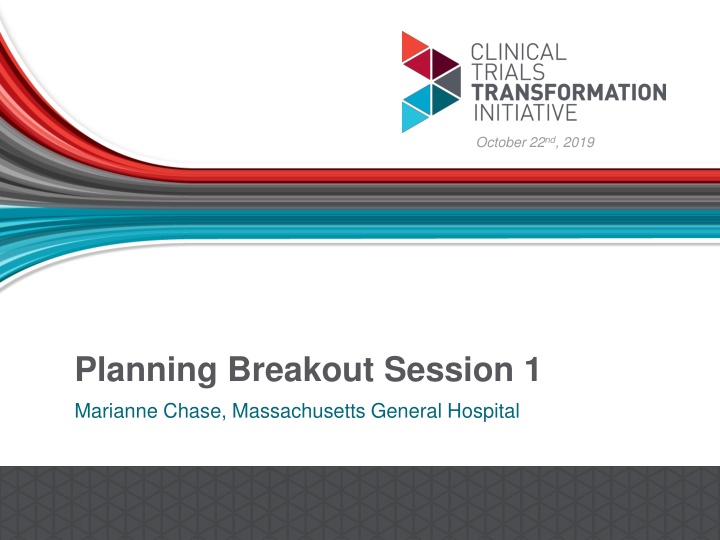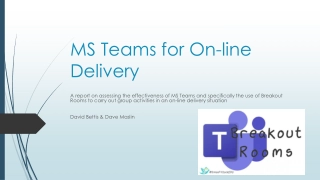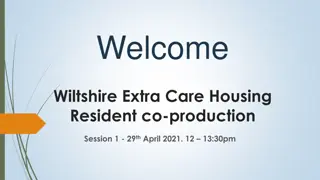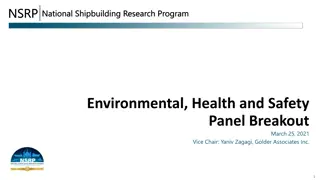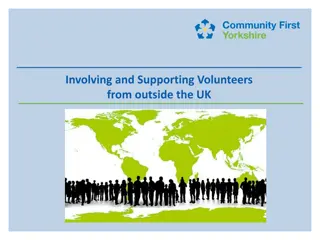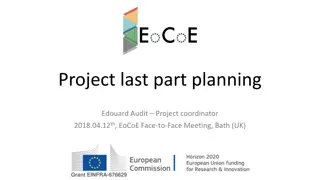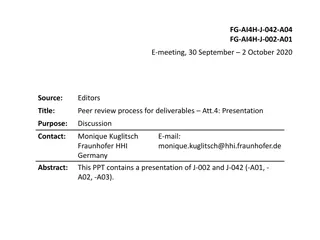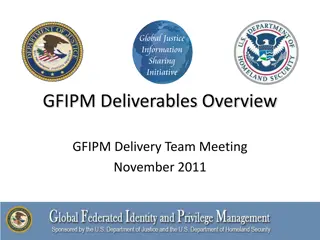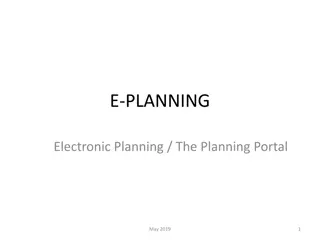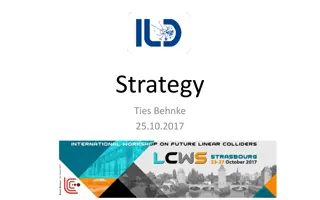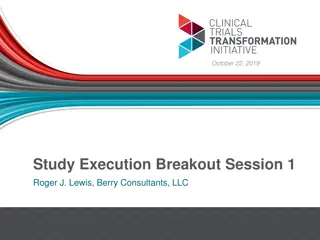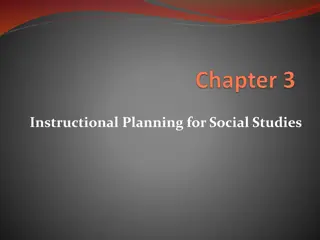Planning Breakout Session Objectives and Deliverables
This document outlines the objectives and ground rules for a planning breakout session focusing on providing feedback on high-level roadmap, prioritizing key roadblocks, and developing strategies. It also details deliverables related to study design, clinical trial management, data ownership, and site network development.
Uploaded on Mar 17, 2025 | 1 Views
Download Presentation

Please find below an Image/Link to download the presentation.
The content on the website is provided AS IS for your information and personal use only. It may not be sold, licensed, or shared on other websites without obtaining consent from the author.If you encounter any issues during the download, it is possible that the publisher has removed the file from their server.
You are allowed to download the files provided on this website for personal or commercial use, subject to the condition that they are used lawfully. All files are the property of their respective owners.
The content on the website is provided AS IS for your information and personal use only. It may not be sold, licensed, or shared on other websites without obtaining consent from the author.
E N D
Presentation Transcript
October 22nd, 2019 Planning Breakout Session 1 Marianne Chase, Massachusetts General Hospital
Planning Breakout Session 1 Objectives Provide feedback on CTTI s high-level roadmap (will focus today s conversation on Planning) Prioritize key roadblocks Develop strategies to address key roadblocks
Breakout Session Ground Rules Listen actively and respectfully Give everyone the opportunity to share their ideas Recognize that there will be disagreement: To maximize the benefit of collaborating, you need to diverge before you converge Team members with minority perspectives should be given the opportunity to speak up Criticize ideas, not people
Breakout Session Introductions Name, affiliation What will change if we do not increase the use of master protocol studies in diverse therapeutic areas?
CTTI High-Level Roadmap: Planning
Planning Deliverables: Design Refine study hypothesis and objectives For studies that use an adaptive trial design, simulation-guided clinical trial design is required to establish the operating characteristics of the trial Develop plan for pre-planned adaptations
Planning Deliverables: Operations Develop clinical trial management systems that are flexible and integrated (e.g., web-based randomization system Establish implementation logistics for the statistical analysis plan: Ongoing data collection Timely implementation of pre-specified interim analysis Budget and contracting Clarify: Who owns the data, especially data in the placebo arm. Rights to use or license Balance patient-centered considerations regarding data sharing and access with the need to preserve proprietary information.
Planning Deliverables: Operations Develop site network: Assess fit, feasibility and training needs Identify vendors: Assess fit, feasibility and training needs Establish criteria and centralized process for investigational medical product selection Develop governance structure
Planning Deliverables: Multi-Stakeholder Engagement Regulatory engagement FDA: Agency wants early and frequent interaction. International Regulatory Engagement Clarify differences in global regulatory approaches. Identify available guidance to help identify what these differences may be. IRB engagement and education Engagement of sponsors, disease experts and the patient community in decision-making processes related to protocol design and governance
Planning Roadblocks: Design Reaching consensus on key design requirements requires significant time and engagement of multiple stakeholders: Alignment on key assumptions Evaluation of design features tested in statistical simulations. Ability to respond to and resolve competing pressures (e.g. time, budget, risk) Impact of future regimens / appendices can be difficult to identify early on, so may require future amendment to the master protocol
Planning Roadblocks: Operations Establishing a qualified network of sites Identifying vendors (central laboratories, pharmacies, etc.) with appropriate experience with master protocols Key considerations for a platform trial: Perpetual nature of platform trials can make it difficult to get accurate quotes Ability to process samples in a timeline (sometimes real-time) manner versus batching samples Difficulty identifying a CRO with sufficient experience. Funding can often be an impediment as the eventual cost of the trial is substantial.
Group Feedback Key deliverables: What have we captured well? What should we expand upon? Key roadmap: What have we captured well? What should we expand upon?
Group Questions Which roadblocks are the most disruptive to progress during the planning stage of a master protocol? How do these roadblocks undermine successful trial execution? How do different stakeholder groups (e.g., patients, providers, study sites, sponsors) experience this roadblock?
Strategy Development Discussion Prompts Prioritize the roadblock What is the problem? Which stakeholder groups are the most effected by this roadblock? How has your organization successfully addressed this problem? What strategic action should be taken to proactively address this roadblock prior to study execution?
Are Our Strategies Study-Level or Enterprise-Level? Study- Level Enterprise- Level Changing Hearts and Minds Broad capacity building NUTS AND BOLTS: How do we get it done?
Does Our Strategy Fit This Criteria? Targeted: Driven by a well-defined problem Responds to the needs of a specific stakeholder group Consider of less experienced groups Flexible: Can respond to the cyclical, iterative nature of some roadblocks Scalability (can be applied at a small scale or a large scale) Feasible: Target stakeholder group has the capacity to implement the strategy
Strategy 1 Prioritized roadblock: What is the problem? Reaching consensus on key design requirements requires significant time and engagement of multiple stakeholders. Which stakeholder groups are the most affected by this roadblock? All stakeholder groups (e.g. patient advocacy groups, interventional arm owner, key opinion leaders) are impacted, it is critical the think through unique barriers to achieving consensus that are relevant to each stakeholder group Example of effective problem-solving approach: Have a structured consensus- building process one example is having an intensive face-to-face design strategy meeting that engages champions and key decision makers Multiple diseases, or multiple investigational products What strategic action should be taken to proactively address this roadblock? Making sure key decision makers have appropriately gotten feedback from all relevant stakeholders, but note that a design-by-committee approach may not be feasible
Strategy 1 Prioritized roadblock: What is the problem? Identifying qualified vendors for the trial Which stakeholder groups are the most affected by this roadblock? Non-traditional drug developer (e.g. nonprofit) Example of effective problem-solving approach: Create criteria for assessing vendor qualifications Need to balance utilizing preferred vendors with vendors who have master protocol experience What strategic action should be taken to proactively address this roadblock? Consider RFI/RFP process
THANK YOU. www.ctti-clinicaltrials.org
